The mist beckons. It's time to face your fears.
D&D’s newest sourcebook is Van Richten’s Guide to Ravenloft, a massive expansion of one of the most popular D&D adventures of all time! It’s available for preorder now in the D&D Beyond Marketplace, and you’ll gain access to all the horrors within its pages when it’s released on May 18th, 2021. Let’s take a look at all the dark details we’ve learned about this upcoming book...
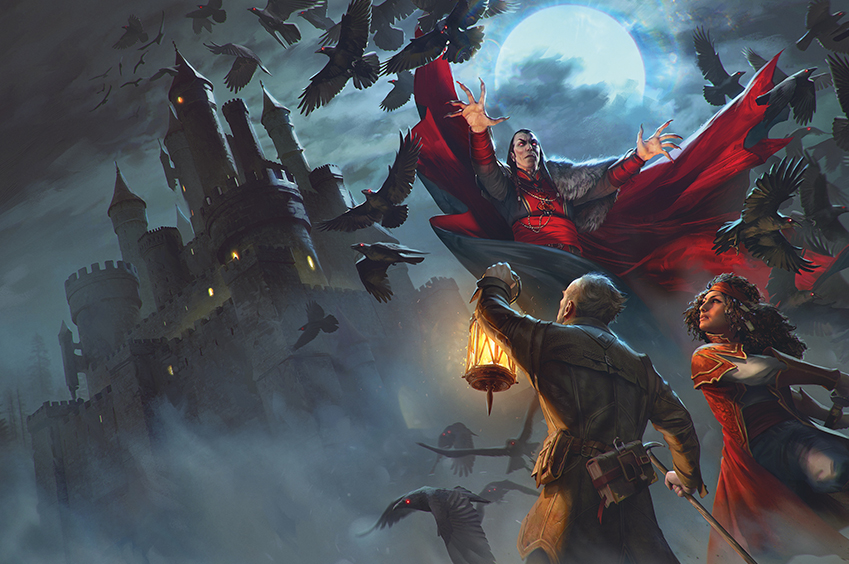
Beyond Strahd
While the creeping mist of Bavoria will be further explored in Guide, the 'boundaries' of Ravenloft are being massively redefined with the introduction of 30 different Domains of Dread- all different horror-themed settings to test the mettle and morals of your players! Like Strahd and his kingdom, each Domain will feature its own twisted Darklord with goals and machinations of their own.
Domains announced and discussed so far by the lead designer of Van Richten’s Guide to Ravenloft, Wes Schneider, at the book’s recent press event include Lamordia, a frigid vision of mad science gone wrong; the surreal, dark fairytale masquerades of Dementlieu; treachery and intrigue in the encounters in the dark rain forests of Kalakeri; and the endless zombie nightmare of Falkovnia. Further teased and suggested were even more flavors of horror: from most dangerous games to traditional ghost stories, and even D&D’s spin on cosmic dread.
“I’m a huge fan of all things horror, so it was an absolute thrill to frame this book around bringing frightening elements like mummy lords, cosmic terrors, and urban legends to more D&D tables,” said Schneider. “Working with exciting new voices in horror and visual artists like D&D concept artist Shawn Wood was essential to make sure we’re updating the aesthetic for today’s fans while staying true to the roots of Ravenloft.”
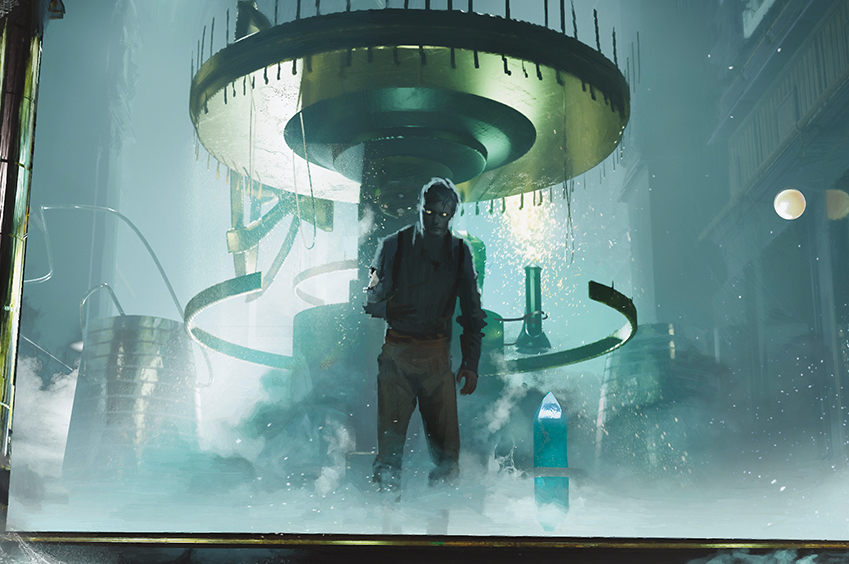
Old Enemies and New Faces
With Ravenloft in the title, old favorites like Strahd are to be expected--in fact, while the book is aimed at new players (who never had their copy of I, Strahd: The Memoirs of a Vampire taken away by their parents in middle school) that may be completely new to the setting, there are plenty of promised nods for long time fans--including the return of Ezmerelda d’Avenir, a fresh take on the Vistani, as well as a new generation of monster hunters in the Weathermay-Foxgrove Twins. And it’s good to have allies in horror, lest your party’s body parts be sewn together and reanimated by Darklords like Dr. Viktra Mordenheim.
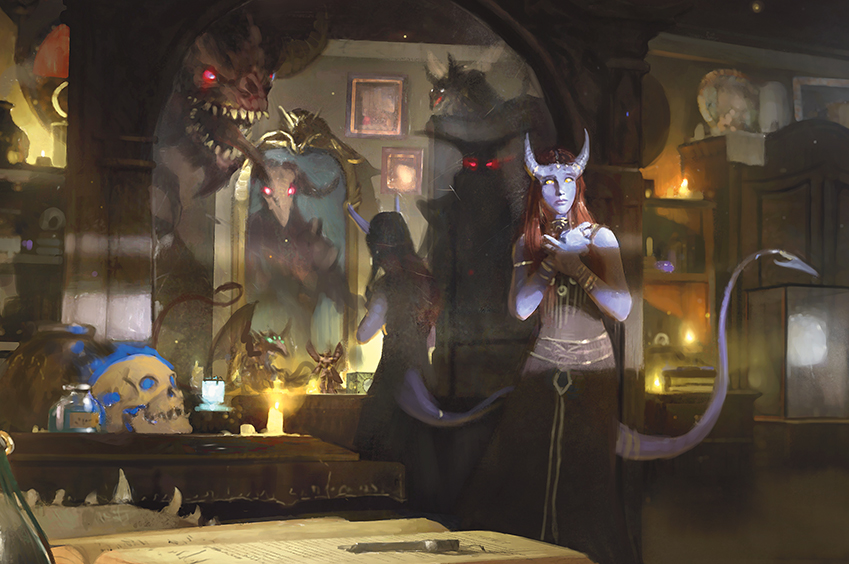
Saving Throws to Save Your Soul
Players will also get an opportunity to explore their characters’ dark sides with two all-new character subclasses: the College of Spirits Bard, powerful storytellers who control and manipulate the power and spirits of stories and folklore that shape the past, and the Undead Pact Warlock, for magic-users that want to make a deal with something truly horrific... at the cost of their soul.
Additionally, as recently explored in Unearthed Arcana, players can also create a dhampir, hexblood, or reborn character, which offer vampire, hag, and undead lineages, respectively. Schneider also challenged players with the idea that in Ravenloft, “death isn’t the end,” pushing the horror theme with ideas of reanimation, inherited mantles, and bloodlines to further explore the idea of lineage.
Especially intriguing is the addition of Dark Gifts--benefits bestowed with a deadly cost that provide even more role-playing ties to the Domains of Dread.
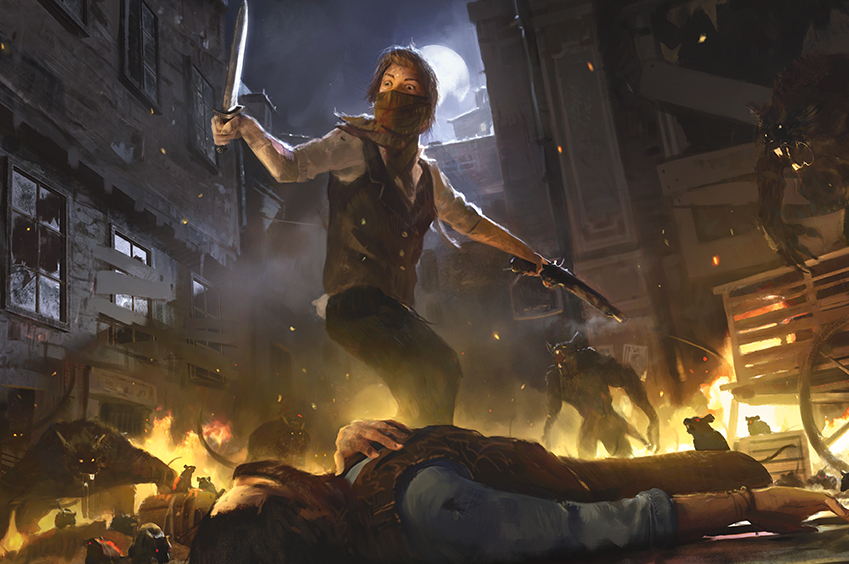
Monster Mash
Van Richten’s Guide also includes what Schneider describes as a “meaty” bestiary, with about 40 pages worth of horrific monsters---including classic Ravenloft favorites. He also discussed the book's guidance in taking existing monsters in D&D and approaching them from horrifying new angles. From single goblins to shambling zombies that first-level players would typically yawn at, this could change the way we approach encounters in the game.
If monsters are your horror flavor of choice, the book certainly seems to have captured them all, from D&D spins on pop culture classics, cosmic madness, and even plenty of creepy nautical nasties in the Sea of Sorrows.
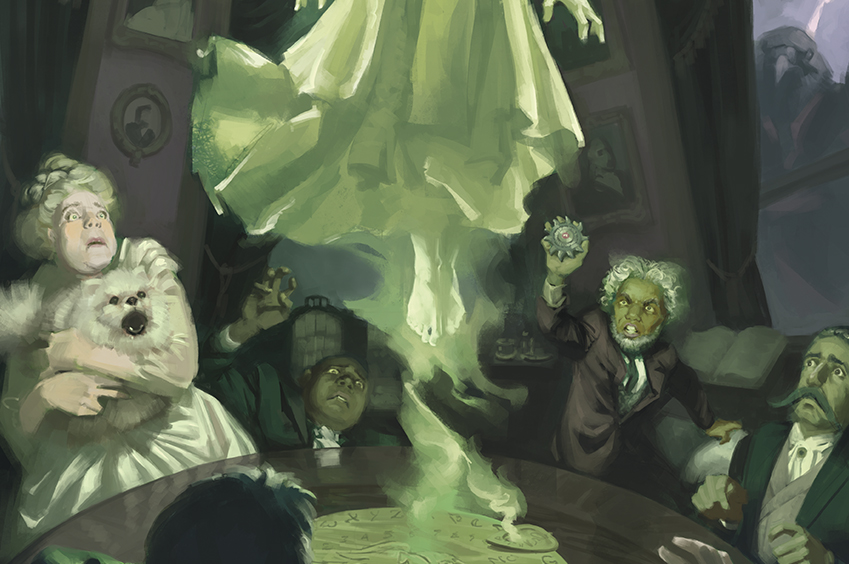
Whatever Walked There Walked Alone…
Of course, no sourcebook would be complete without an all-new adventure, and Guide features a 20 pages D&D spin on the classic haunted house genre, The House of Lament. It’s an atmospheric adventure of spirits, seances, and things going very, very badly.
The book, worked on by a who’s who of horror writers, also contains plenty of story hooks and guides for breaking out your own Tarokka decks and spirit boards for creating your own horror stories- and even your own Domains of Dread.
You can preorder Van Richten’s Guide to Ravenloft on the D&D Beyond Marketplace right now! You’ll get special goodies for pre-ordering, and instantly have access to the book when it releases on May 18, 2021.
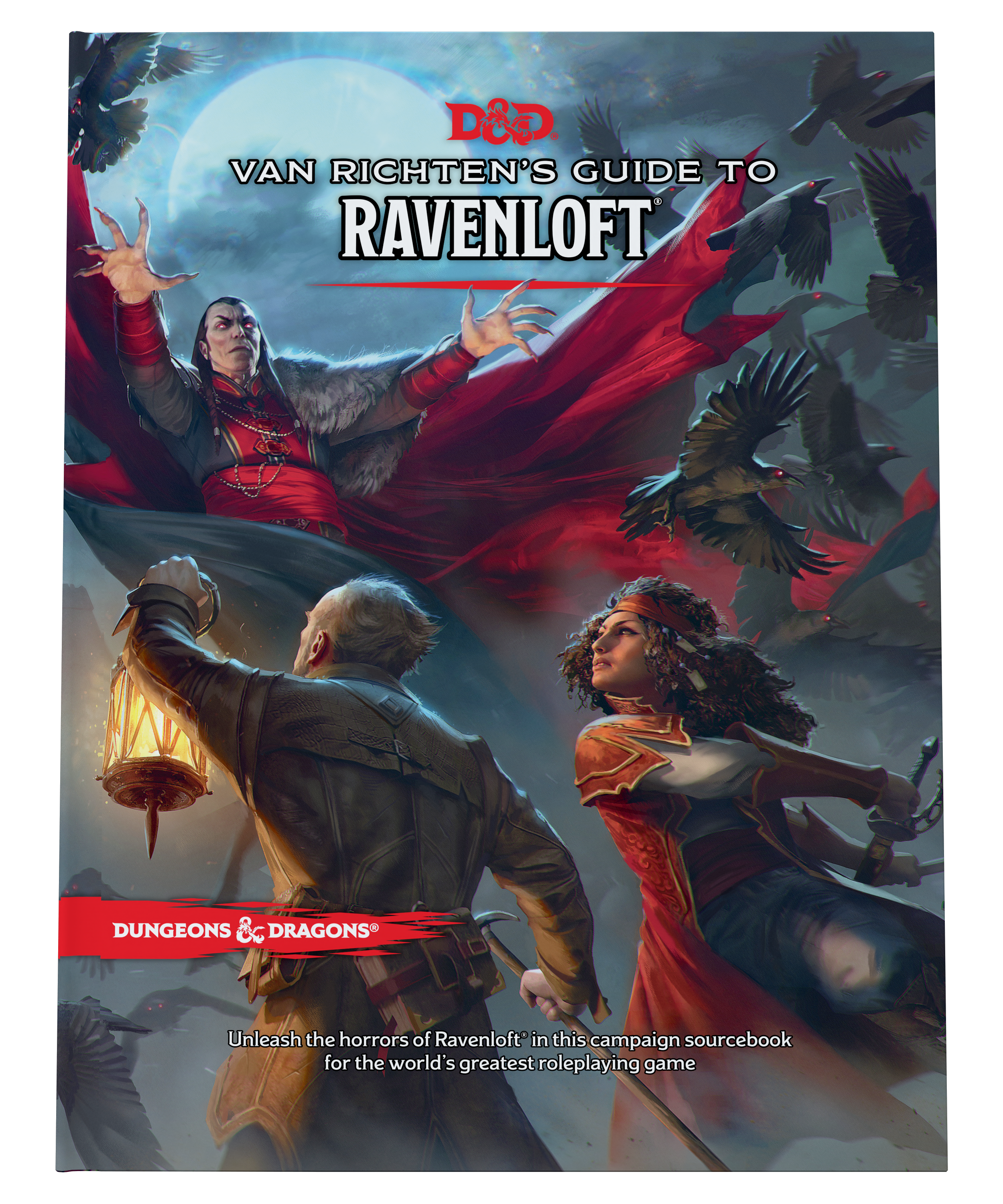








-
View User Profile
-
Send Message
Posted Mar 6, 2021Hol up, do you put a lineage on top of your existing race or is it your race?
-
View User Profile
-
Send Message
Posted Mar 6, 2021From the UA, lineages can be used from character creation or as a replacement race, it depends on when in your character's story you became the lineage. You could start Session 0 as a random Reborn climbing out of a grave as a level 1 fighter, or you could get to level 8 as a Dwarven fighter of many battles, heroically save the party at the cost of your own life, and later during the resurrection, the cleric sneezes when invoking Moradin, so now you're... different.
Gifts, either from Theros or Dark Powers, can work the same way. Are you destined to achieve greatness (character creation), or are the gods rewarding you for your valor (bonus during play). Did you somehow fight off a horde of zombies as a kid who can barely lift a sword (you start with a Dark Gift), or is Strahd about to raze Barovia to the ground, cleansing it of impudent mortals, and even with your party fully prepared, allies gathered, there is no chance of survival... unless you make a terrible bargain with powers beyond understanding (Dark Gift during play).
It's about how your table or character plays out.
That said, I haven't seen the Dark Gifts. Some may be overpowered for level 1 at most tables, others may be little more than flavor text.
-
View User Profile
-
Send Message
Posted Mar 6, 2021RAW, lineage is / replaces your race. At my table, this made for too many inconsistencies with lost abilities, so we put them on top of race & added a serious drawback to balance the lineage abilities. YMMV.
-
View User Profile
-
Send Message
Posted Mar 6, 2021OK, thanks for the info
-
View User Profile
-
Send Message
Posted Mar 6, 2021Oh sorry I should have been clearer haha, no I was asking if it would be implemented in the same way, bc when they released theros there wasn't really an option to use those supernatural gifts, and when I first read about the lineages I interpreted them as being like that. I had an idea for an eladrin hexblood character that I wanted to play and I was wondering if the Hexblood came on top of the race, like a feat, or if they would be separate from feats and find a whole new niche in the character creation section that said if I could have a character that had a lineage and a theros.
that said I would 100% play a character with a lineage and a supernatural gift, because that sounds like a fun character haha.
-
View User Profile
-
Send Message
Posted Mar 6, 2021I really want them to put in a spelljammer campaign setting, literally have been desperately looking for a supplement/homebrew since I found out about it lol.
I don't know enough about Dragonlance, Mystara, or Nentil Vale to say anything about it but I've heard some awesome stuff about Greyhawk that I would love to make some characters with.
-
View User Profile
-
Send Message
Posted Mar 7, 2021Nice !
-
View User Profile
-
Send Message
Posted Mar 7, 2021What you've described is a Mary-Sue. Being special, and completely unearned, culminating in a power fantasy. Having it written into the rules doesn't change that, nor does it change the fact that an identity is not a character.
-
View User Profile
-
Send Message
Posted Mar 7, 2021I made Dhampir Ranger 1 and Dhampir Fighter and Dhampir Rogue 1 and Dhampir Paladin 1 and Sorcerer Dhampir 1 and Hexblood warlock 1
-
View User Profile
-
Send Message
Posted Mar 7, 2021I know what a mary sue is, thanks though. Flaws can extend beyond playing a character that has powerful abilities? Like there are so many examples in media where a character is good at combat but they have something holding them back emotionally. I honestly couldn't care less whether you optimize your characters or if you enjoy the roleplaying aspect of the game more, but it's kinda bad form to shame someone else for enjoying something. I haven't and likely will never play D&D with you so why does it matter whether I enjoy playing a character like that? Roleplaying often fixes the problems that optimized characters have, or gives them more problems to fix the fact that they're perfect. It's called balanced character creation. If a DM has a problem with optimized characters, then there are three solutions: have them make a new character, make harder encounters, or give them a huge character flaw that will impact them in a way that balances them out entirely.
I'm not trying to argue with you, but I've faced backlash for optimizing characters before so I wanted to get my two cents out there. You don't have to read it all or frankly agree with me, but it's my opinion and in the end my character. Have a good day!
-
View User Profile
-
Send Message
Posted Mar 7, 2021YESSSS OVER THE GARDEN WALL
I DIDN'T THINK OF THAT, THATS AN AWESOME WAY TO USE THIS BOOK
-
View User Profile
-
Send Message
Posted Mar 7, 2021AGREED!
-
View User Profile
-
Send Message
Posted Mar 7, 2021Agreed! Optimization isn't for every table, but the campaigns I play in tend to be particularly difficult at times, and even a well-optimized v. human warlock with PAM and Sentinel (my character) goes down like nearly every fight. Some campaigns are much more roleplay-based, and that's awesome! Honestly kinda wish that I could play in one once and a while for a change haha.
-
View User Profile
-
Send Message
Posted Mar 7, 2021It would probably need to be made a little more fantasy-like than it currently is though. Spelljamers would probably be better in a non-forgotten realms setting because the lore behind spelljamers and the aether doesn't make much sense and doesn't fit that well in D&D. If they were only multiplanar rather than multisphere, I think it would be better, so you could have ports, interplanar importation, etc.
-
View User Profile
-
Send Message
Posted Mar 7, 2021I definitely agree, but I do like how they've connected in the past. I definitely would play in a campaign that starts in the forgotten realms and by 5-10th level, we're flying in a magic-powered pirate ship through space. Personally I enjoy 5e and think WotC has done a good job with it, so I think it'll be fun no matter how they attempt to connect the two (or if they decide they're better off separate).
-
View User Profile
-
Send Message
Posted Mar 7, 2021I think it is mostly just for flavor (a dwarf reborn is no different from an elf one).
-
View User Profile
-
Send Message
Posted Mar 7, 2021The aether and spelljamers seem to try to mix fantasy and sci-fi too much. If it was more fantasy flavored so they aren't spaceships that are also ships; one or the other would just be better. This doesn't mean the concept has to completely change. I just think more of a lyrander airship than can planeshift would be better for a fantasy campaign.
-
View User Profile
-
Send Message
Posted Mar 7, 2021Ah, I see what you mean, and honestly I'm inclined to agree that they should choose between one or the other. I personally would enjoy a more fantasy-flavored campaign because that's the kind of D&D I love playing, but I feel like it would be fairer for most people to double down on the sci-fi side of Spelljammer because they haven't done much with it.
-
View User Profile
-
Send Message
Posted Mar 7, 2021I see what your saying. I think the best thing to do is make the spelljammer's abilities very vague so you can change the exact ways everything works so you can do something such as have it open a portal rather than just disappearing and reappearing somewhere else. The fact that the nautaloid spelljammer exists also shows it can be made in many different ways.
-
View User Profile
-
Send Message
Posted Mar 7, 2021Absolutely, my favorite part about D&D is how versatile it can be and that there's basically something for everyone! I think if they were going to make it versatile, they'd do it in a similar way to how they had the 'spell flavor' section in Tasha's, the rules stay the same but the way it appears is different enough to fit how you enjoy the game.